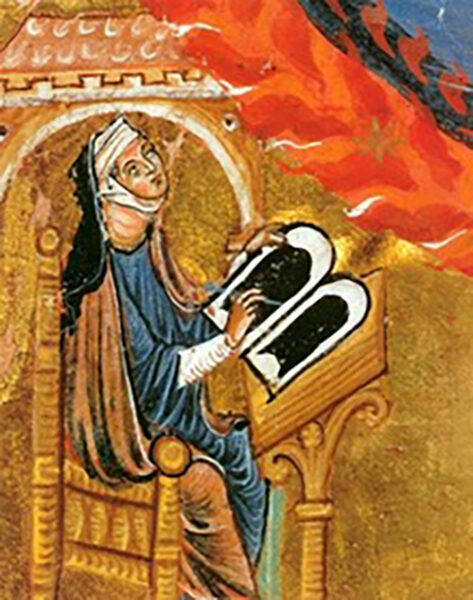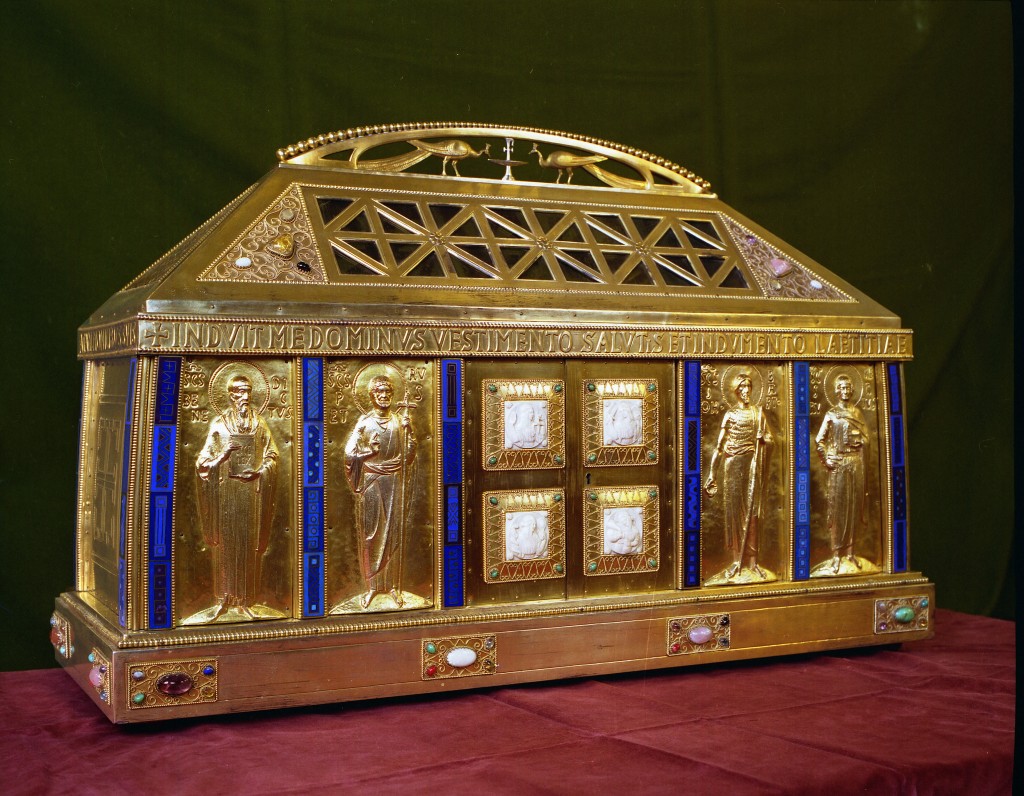Hildegard of Bingen is appointed Doctor of the Church

fol. 1v (early 13th-cen.)
The Catholic Church is adamant in its opposition towards women acting as priests. And for a long time (until 1970) neither were female saints given the prestigious title: Doctor of the Church; a title so-far given to only 35 saints cum learned theologians. However, on the 7th of October the title was awarded to St. Hildegard of Bingen, known for her visionary writings as well as music and art. She is the fourth female Doctor of the Church.
Hildegard was probably enclosed at the age of 14 in 1112 together with an older nun, Jutta, at Disibodenberg. Upon Jutta’s death in 1136 Hildegard was appointed prioress. Afterwards Hildegard sought to move her community to a new location at Rupertsberg in order to obtain more independence from the church hierarchy. Her request was however initially declined and it took a long fight, before she and her nuns could move in 1150. In 1165 Hildegard founded a second monastery for her nuns at Eibingen. During her life she wrote extensively on mystical and theological matters as well as worked as a musician and artist. Hildegard’s musical, literary, and scientific writings are housed primarily in two manuscripts: the Dendermonde manuscript and the Riesenkodex. The Dendermonde manuscript was copied under Hildegard’s supervision at Rupertsberg, while the Riesencodex was copied in the century after Hildegard’s death. Added to this should be her extensive letter writing as well as her wide-ranging preaching tours, where she spoke up against clerical corruption and simony.
All the while she tended to refer to herself as a member of “the weaker sex”, while constantly belittling women. This has caused some problems for those feminist theologians and scholars, who have tended to consider Hildegard their patron saint par excellence. However, most believe that it was in fact a rhetorical trick she seized on in order to be seen as not competing with the learned male theologians. Instead she tried through this subterfuge to stamp her visions as deriving directly from the Divine, thus gaining the authority to speak aloud in spite of her sex.
Officially she was never sanctified. Four times the process was put into motion, but until now she never reached beyond beatification. This, however, has been remedied by the official sanctification and elevation of Hildegard to Doctor of Church October 2012
Some might say that this was long overdue and she rightfully deserves this honour. On the other hand, evil tongues may claim that the Catholic Church has only taken this step in order to – once more – reclaim a very will-full and not very subservient daughter of the church, who tended to find ways of subverting the authority of her official male superiors and who is highly inspirational for many present-day female theologians; thus showing her recalcitrant sisters of the weaker sex, who is in power.
Conference
In order to celebrate her new status the Scivias-Institute for art and spirituality has invited academics to an international conference in Bingen. Apart from lectures on her visionary theology, sessions will focus on her work as a poet, composer, artist, healer and politician. The conference will be accompanied by meditations, pilgrimages and concerts.
The Conference takes place at different locations on the Hildegard-tour – Disibodenberg, Rupertsberg and Bingen.
St. Hildegard, Doctor of the Church. International Conference.
Bingen- Disibodenberg-Eibingen
25.10.2012 -28.10.2012
TOURISM:
READ MORE:
The literature about Hildegard is wide-ranging and very extensive. A good place to start is the Wikipedia-site, which is very extensive.






